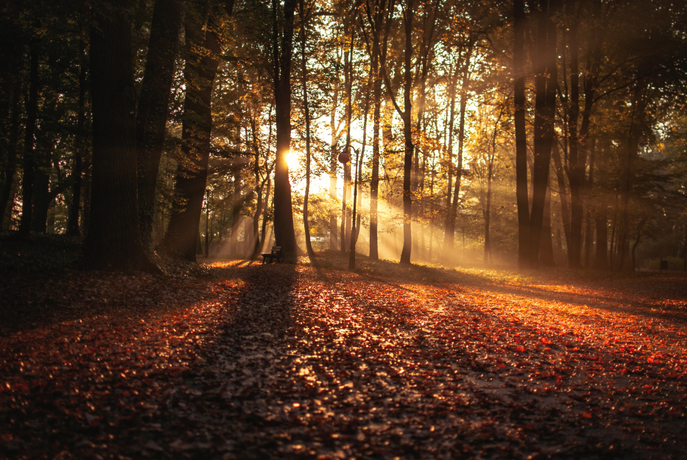
What is Seasonal Light Disorder and Does it Affect Sleep?
Shelly Weaver-CatherAutumn brings with it a lot of beautiful things—cool relief from the summer heat, a red-orange foliage blanket on the sidewalks, and a warm, glowing, amber light.
You don’t notice it right away. It sneaks up on you, washing everything in a soft, golden glow. The light starts shifting away from a bright, clean white in the early fall and as the weather cools down, the light warms up—but how does this impact your day-to-day?

Why light changes throughout the year The Earth’s orbit and the tilt to its axis both play a role in how seasons change—in January, the Earth is closest to the sun, and in July it reaches the farthest point. The actual change in distance between the Earth and the sun is small, but the impact on the amount of sun exposure and quality of light is pretty noticeable to the human eye.
In the fall, the angle of the sun starts lowering for the Northern hemisphere, shortening the days one by one until the Winter Solstice. The angle of the light also shifts, creating a tonal shift that we start to pick up.
In the heat of summer, the sun is a high as can be and we’re used to long, hot sunbeams. The gradual drop throughout the fall shortens the length of the sun rays, altering the warmth of light as it descends.
In a recent study, participants were tested in both summer and winter for color perception—relying on their use of a colorimeter to gauge how they perceive yellow at different points in the year. The study suggests that the influence of our surrounding environment plays a bigger part in color perception than previously thought. The bright greens and blues of summer and the icy blues of winter provide such a stark contrast that we become drawn to certain tones in certain seasons.

How does light effect sleep? Our circadian rhythms are managed by proper light exposure. We perceive light throughout the day and the retinal stimulation helps our brains know when to release the appropriate hormones to help us get to sleep, stay asleep, and wake up at the right times. As light starts to fade in the evenings, your body triggers the release of melatonin and other hormones to ease you into sleep, and as the sun comes up your cortisol levels rise to wake you. Without the natural light cues, it can be harder to wake up in the morning on time—often we struggle to get up before the sun for this reason.
While sleepers are likely to adjust to gradual light change, some find that the seasonal shifts cause disruption to their sleep for an extended period of time. You may find that you wake up earlier than intended, or can’t fall asleep on your normal schedule as the seasons start to change. If you’re experiencing frequent disruptions or the inability to sleep to begin with, talk with your doctor. They may be able to recommend a solution to help you stay well-rested all year long.
Transmeridian travel can also cause sleep issues for a similar reason—the sudden change in amount of light exposure confuses the natural clock that regulates your sleep-wake cycles. Sudden shifts to sleep-wake cycles can make you more likely to get sick, irritable, or lose a significant amount of cognitive function until you catch up.

How does light affect your mood? When it comes to how changing light impacts our day-to-day, our circadian rhythm plays a huge part. Your natural clock runs on an approximately 24-hour cycle and it’s heavily guided by the amount of light you’re exposed to during the day. The quality of sleep you get can impact your mood in various ways.
Seasonal light disorder or seasonal affective disorder is a form of depression that correlates when the fall and winter season sets in. The decrease in light exposure is thought to throw off circadian rhythms and delay sleep-wake cycles. The desynchronization of your typical cycle can cause symptoms of depression and anxiety and can often be treated with a special light that imitates the morning sun in warmer seasons. Light boxes are specifically crafted to expose you to more light when you first wake up, helping to keep you in a regular sleep-wake cycle.



